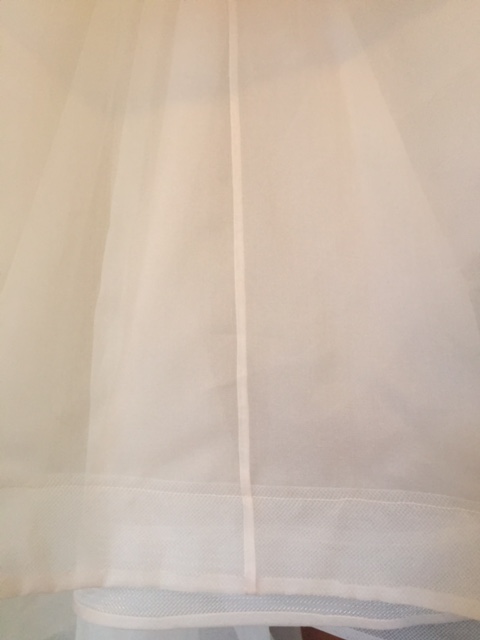
I’ll admit that invisible zippers used to intimidate me. They give such a professional finish, and I didn’t think that I’d be able to achieve the same results. I had a look around on the internet for tutorials, and found that there are a few different ways to put them in.
After a lot of practice (and plenty of mistakes), I’m happy to say that I can confidentially insert an invisible zipper. Go out and get yourself a zipper foot that fits your machine. I found an adjustable one, and it has made the entire process much easier.
I’m going to show you my most trusted method. Prepare for LOTS of big pictures..
First, you need to iron the zipper. Open the zipper and using a low to medium heat, gently press the zipper teeth as flat as possible. This step makes everything so much easier, so don’t skip it out.
Pin one side of the zipper tape to the right side of your fabric, lining it up with the raw edge. The teeth need to be facing away from the raw edge. I like to start pinning the zipper a few mm’s away from the neckline. This makes finishing the zipper much neater, but we’ll get to that later. Pin the rest of the zipper tape down.
Now for some sewing. Baste the zipper to the fabric. This first row of stitches doesn’t need to be up against the teeth, so pick a point a few mm away from the teeth. Take out the pins as you come to them. This row of stitches won’t be seen, and will stay in your garment.

The basting stitches make the next step a lot easier, as you don’t have to worry about pins getting in the way. Place the zipper so that the machine needle is coming down as close to the teeth as possible. You don’t want to pierce the teeth at any point, so just take it slowly.

In the picture below, you can (just) see both rows of stitches, the one on the left is the basting, and the one on the right is the finish.

Repeat these steps on the other side. I find the easiest way to line everything up, is to do the zipper up a few cm’s, and from the wrong side, pin the seam allowance together matching any notches in the pattern. Then you can pin the zipper and fabric together where they naturally fall. Sometimes this method is out by a few mm, but never enough to really matter too much.

Now you need to finish the top of the zipper, which will look something like this:

Open the zipper, and on one side, fold the top of the tape over at an angle.

Take the facing/waistband and pin it to the zipper tape, with right sides of the fabric facing each other. This is where that few mm near the neck line come in handy. By pulling the facing over the zipper, you get a very clean finish.

Sew the facing to the zipper, making sure not to get too close to the zipper teeth. The zipper-pull needs to be able to slide up the back of the tape, without getting caught in the facing.

Chop off the bit of zipper tape that hangs out, and turn right side out.
Repeat on the other side.

Last step! Finishing the bottom of the zipper into the seam. With the zipper done up, pin the seam together, matching any notches in your pattern. Fold the zipper tape so the raw edges of the fabric are level, and insert a pin in the seam allowance, just below the point you stopped sewing the basting and final rows.

Still using your zipper foot, start sewing close to the zipper teeth (which are encased in the seam), just above the point you stopped sewing the basting and final rows.

Finish sewing the seam. The beginning of this seam is usually more than my normal 1cm seam allowance, sometimes 1.5cm or even 2cm. Once I’m past the zipper, I gently slope my seam back down to 1cm.

Give everything a good press with your iron, and that’s it! Perfectly flat, and seamless!

I hope this has been of some help! Remember, this is my preferred method, but there are plenty of other ways to put your zipper in, if this seems too complicated.
Mitty x



























